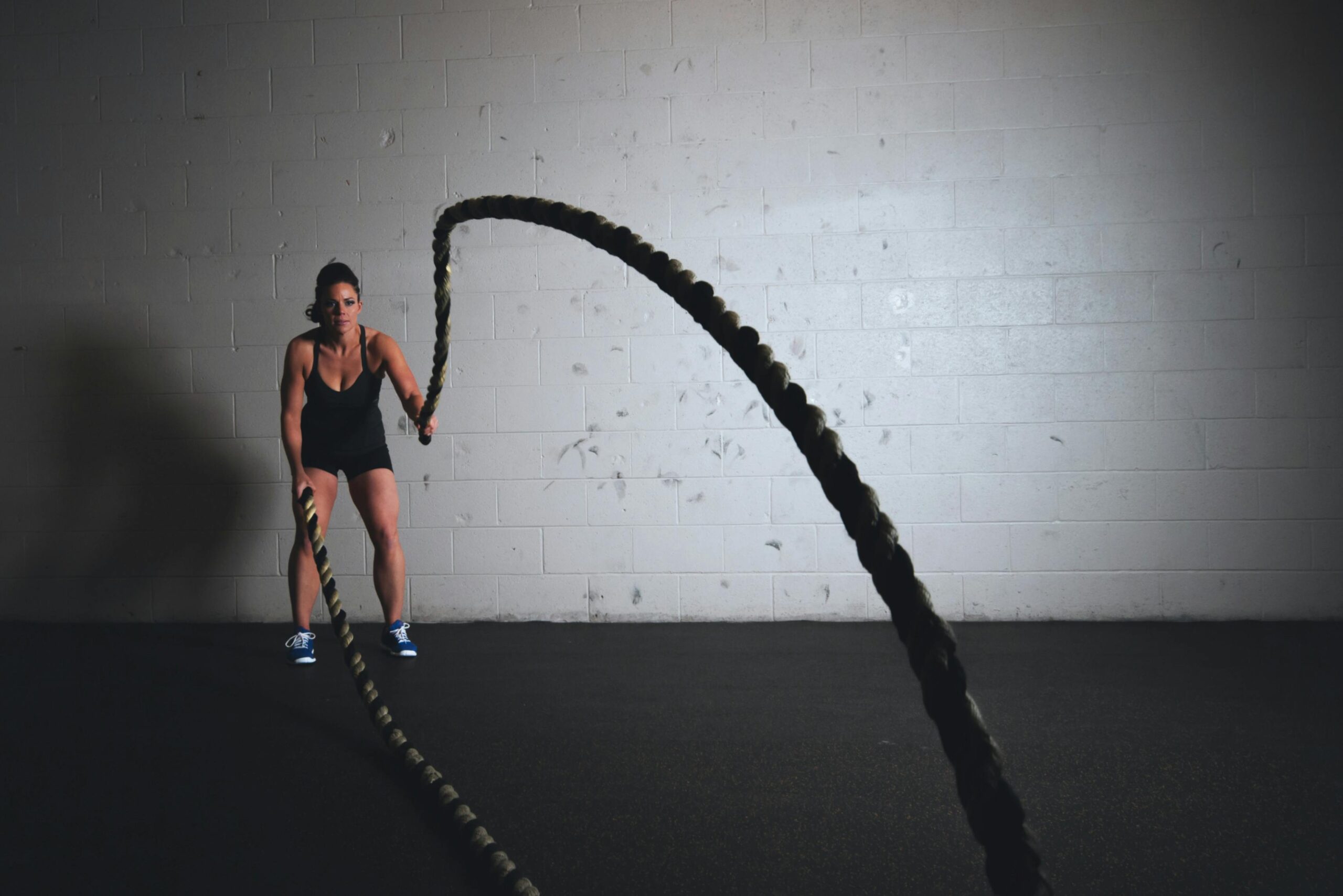Table of Contents
Introduction
In today’s fast-paced world, maintaining a healthy lifestyle can often feel like a challenge. However, one of the simplest and most effective ways to improve your health is through aerobic exercise. With its myriad benefits ranging from physical health improvements to mental well-being, aerobic exercise stands as a cornerstone of a balanced fitness routine. According to the American Heart Association, engaging in regular aerobic activity can significantly reduce the risk of heart disease, stroke, and other chronic conditions by up to 30%.
This blog will delve into the benefits of aerobic exercise, explore various types, and provide practical guidance on incorporating it into your fitness routine. By understanding and leveraging the power of aerobic exercise, you can enhance your overall health and quality of life.

1. The Power of Aerobic Exercise
Cardiovascular Health
Aerobic exercise is renowned for its positive impact on heart health. Regular aerobic activity strengthens the heart muscle, making it more efficient at pumping blood throughout the body. This increased efficiency lowers blood pressure and helps reduce bad cholesterol (LDL) levels while raising good cholesterol (HDL) levels. Consequently, engaging in aerobic exercise can significantly decrease the risk of heart disease and stroke.
Weight Management
One of the most well-known benefits of aerobic exercise is its role in weight management. Aerobic activities are excellent for burning calories, helping to create a caloric deficit necessary for weight loss. Moreover, consistent aerobic exercise boosts metabolism, making it easier to maintain a healthy weight over time. Whether your goal is to shed a few pounds or maintain your current weight, incorporating aerobic exercise can be an effective strategy.
Mental Health
Beyond physical health, aerobic exercise offers substantial mental health benefits. Engaging in regular aerobic activity has been shown to reduce symptoms of anxiety and depression, thanks to the release of endorphins—often referred to as the “feel-good” hormones. These endorphins promote a sense of well-being and can improve mood and cognitive function. Additionally, aerobic exercise can enhance sleep quality, further contributing to improved mental health.
Endurance and Stamina
Regular aerobic exercise improves your body’s ability to deliver and utilize oxygen more efficiently. This increased efficiency boosts your endurance and stamina, enabling you to perform daily activities with less fatigue. Whether climbing stairs, playing with your kids, or completing household chores, increased stamina can make a noticeable difference in your energy levels and overall quality of life.
Chronic Disease Prevention
Aerobic exercise is a powerful tool in preventing chronic diseases. In addition to reducing the risk of heart disease and stroke, it can help prevent type 2 diabetes, certain cancers, and osteoporosis. By improving insulin sensitivity and reducing inflammation, regular aerobic activity supports overall health and longevity.
2. Types of Aerobic Exercise
Low-Impact Aerobics
Low-impact aerobic exercises are gentle on the joints, making them suitable for individuals of all fitness levels, particularly beginners and those with joint issues. Examples include walking, cycling, and swimming. These activities provide cardiovascular benefits while minimizing stress on the body, making them an excellent choice for maintaining fitness over the long term.
High-Impact Aerobics
High-impact aerobic exercises involve more vigorous movements that can significantly increase heart rate and calorie burn. Examples include running, jumping rope, and dance workouts. While these activities are more intense, they are highly effective for improving cardiovascular fitness and building strength. It’s essential to approach high-impact aerobics gradually, especially if you’re new to exercise, to avoid injury.
Group Aerobic Classes
Group aerobic classes, such as Zumba, step aerobics, and spinning, offer a fun and social way to engage in aerobic exercise. These classes often combine music and movement to create an energetic atmosphere that motivates participants to push themselves. The group setting can provide a sense of camaraderie and accountability, making it easier to stick to your fitness routine.
Home and Outdoor Aerobics
Aerobic exercise doesn’t require a gym membership. Many effective aerobic activities can be done at home or outdoors, such as jumping jacks, stair climbing, or hiking. These exercises are convenient and cost-effective, allowing you to fit a workout into your schedule without the need for specialized equipment.

3. Getting Started with Aerobic Exercise
Choosing the Right Activity
When starting an aerobic exercise routine, choosing an activity that suits your preferences and fitness level is important. Consider what you enjoy doing, whether it’s dancing, cycling, or walking, and start there. The key is to find an activity you look forward to, making it easier to stay consistent.
Setting Goals
Setting realistic and measurable goals can help you stay motivated and track your progress. Whether you aim to walk 10,000 steps a day, run a 5k, or attend three aerobic classes a week, having specific targets can give you a sense of accomplishment and direction.
Safety Considerations
Safety is paramount when starting an aerobic exercise routine. Invest in proper footwear to support your activities, warm up before each session to prepare your muscles, and cool down afterward to aid recovery. Listen to your body and avoid pushing yourself too hard, especially if you’re new to exercise. If you have any medical concerns, consult a healthcare professional before starting a new workout regimen.
4. Incorporating Aerobic Exercise into Your Routine
Frequency and Duration
For optimal health benefits, the American Heart Association recommends at least 150 minutes of moderate-intensity aerobic exercise or 75 minutes of vigorous-intensity exercise per week. This can be broken down into manageable sessions, such as 30 minutes of exercise five days a week. Adjust the duration and intensity based on your fitness level and goals.
Combining with Other Exercises
For a well-rounded fitness routine, it’s important to combine aerobic exercise with strength training and flexibility exercises. Strength training builds muscle and bone density, while flexibility exercises improve range of motion and reduce the risk of injury. Aim for a balanced routine incorporating all three elements to enhance overall fitness.
Staying Motivated
Staying motivated can be challenging, but several strategies can help. Track your progress using a fitness app or journal, find a workout buddy to hold you accountable, or mix up your activities to keep things interesting. Celebrate your achievements and focus on the positive changes aerobic exercise brings to your life.
5. Common Myths About Aerobic Exercise
Myth 1: “You Have to Exercise for Hours to Benefit”
Contrary to popular belief, you don’t need to spend hours exercising to reap the benefits. Short, high-intensity workouts can be just as effective as longer sessions. Incorporating brief aerobic sessions into your day, such as a 20-minute brisk walk or a quick dance workout, can yield significant health benefits.
Myth 2: “Aerobic Exercise is Only for Weight Loss”
While aerobic exercise is effective for weight loss, its benefits extend far beyond shedding pounds. Aerobic exercise improves cardiovascular health, boosts mental well-being, and enhances overall fitness, making it valuable for individuals of all sizes and fitness levels.
Myth 3: “Older Adults Should Avoid Aerobic Exercise”
Aerobic exercise is beneficial for people of all ages, including older adults. It can improve cardiovascular health, increase mobility, and enhance quality of life for seniors. Older adults should choose low-impact activities and consult a healthcare professional for guidance on appropriate exercises.

Conclusion
Aerobic exercise is a powerful tool for improving physical and mental health. By incorporating regular aerobic activity into your routine, you can enhance cardiovascular health, manage weight, boost mental well-being, and prevent chronic diseases. Start by choosing an activity you enjoy, set achievable goals, and gradually increase the frequency and intensity of your workouts.
Remember, the journey to better health is a marathon, not a sprint. Embrace the process and celebrate your progress along the way. Share your experiences or questions in the comments below, and subscribe for more insights on fitness and health.
Additional Resources
Links to Workout Videos
– [Beginner Aerobic Workout](#)
– [Intermediate Aerobic Routine](#)
– [Advanced Aerobic Challenge](#)
Recommended Reading
– “Aerobics Program for Total Well-Being” by Kenneth H. Cooper
– “The Aerobics Way” by Jane Fonda
By following this guide, you’ll be well-equipped to harness the power of aerobic exercise to improve your health and fitness, leading to a healthier, more vibrant life


